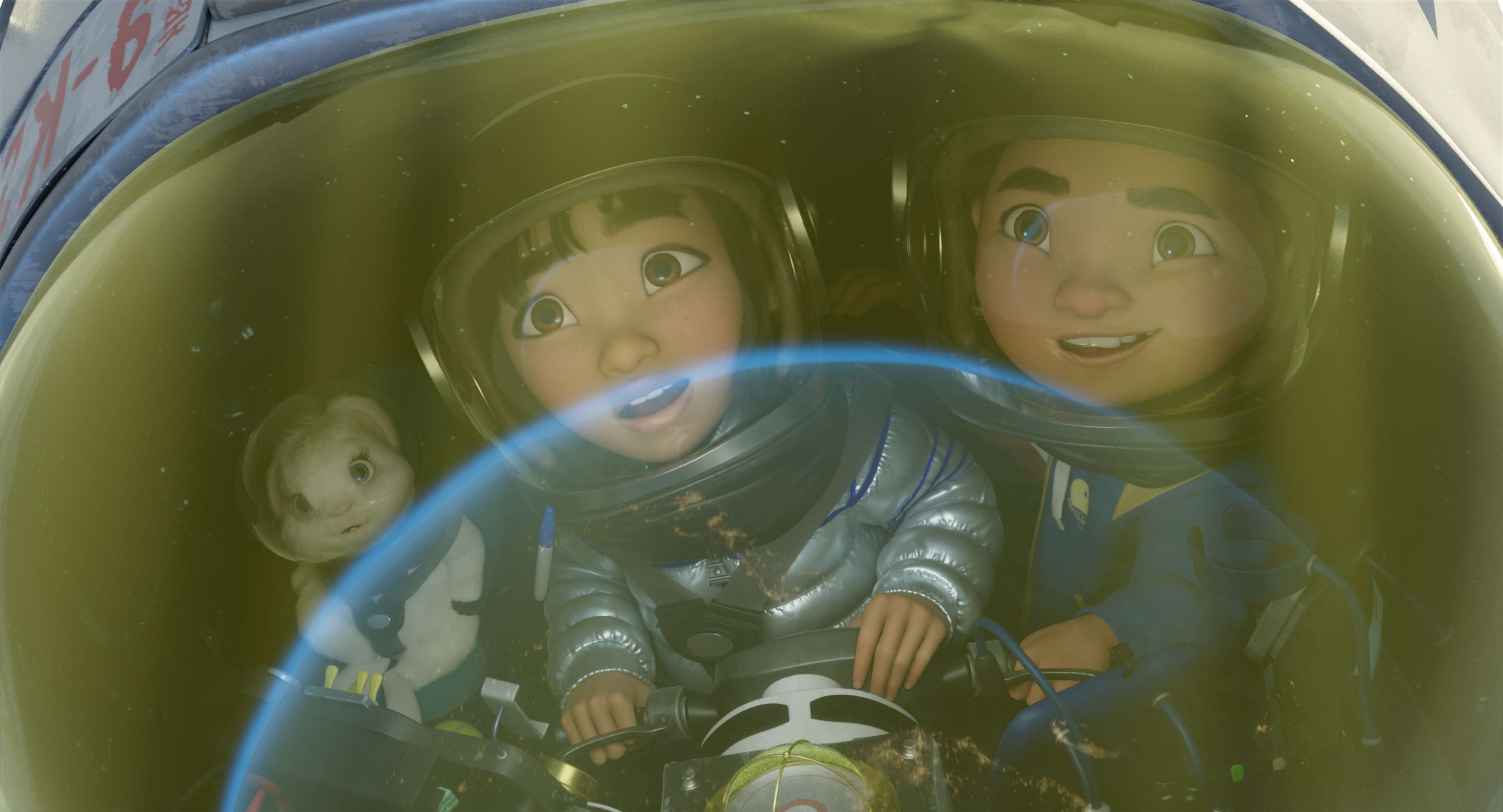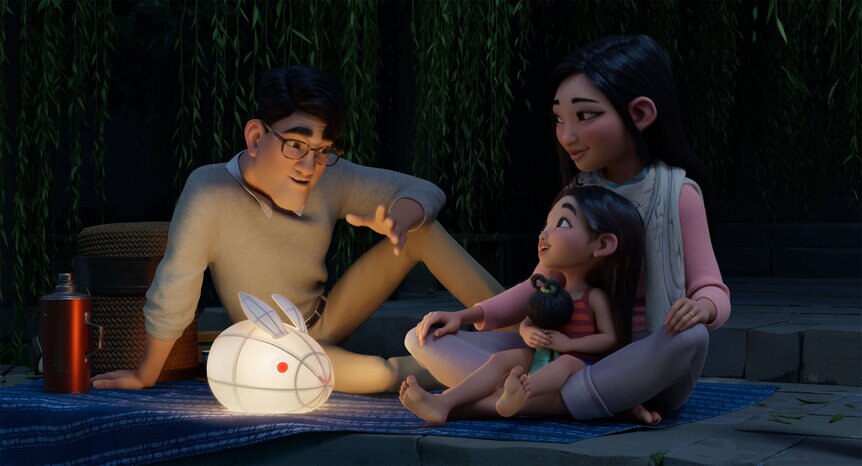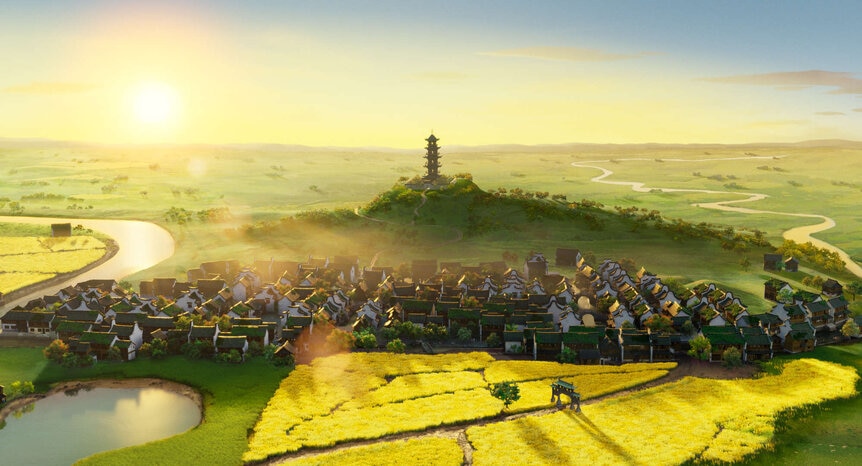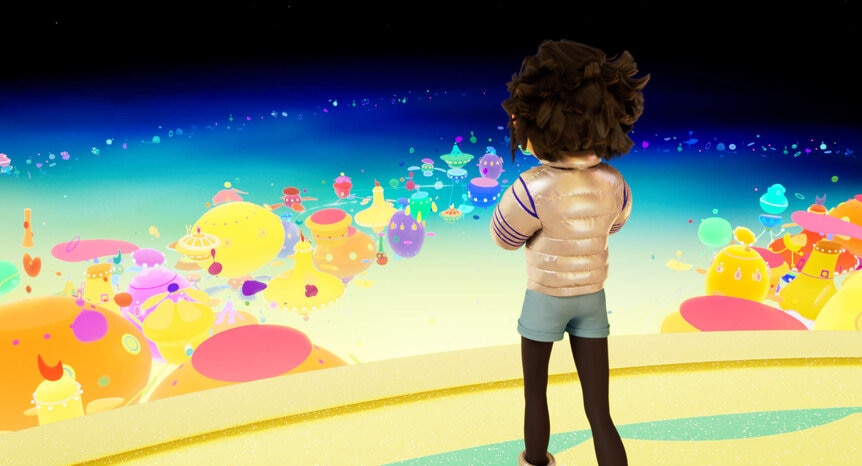Create a free profile to get unlimited access to exclusive videos, sweepstakes, and more!
How director Glen Keane turned Disney and Pink Floyd into emotional rocket fuel for 'Over the Moon'

What do The Little Mermaid, Beauty and the Beast, Treasure Planet, and Tangled all have in common? That would be Glen Keane, a veteran animator who studied under the tutelage of Disney's Nine Old Men. After decades of helping the Mouse House regain its animation pedigree throughout the iconic "Renaissance" period and beyond, Keane is finally making his directorial debut with Netflix's Over the Moon. Steeped in Chinese culture and mythology, the animated musical (premiering today) was a way for Keane to utilize all of the narrative lessons he'd picked up during his long-running Disney tenure.
Producers Melissa Cobb (Kung Fu Panda) and Peilin Chou (Abominable) started courting Keane for the project after seeing him give a speech at the Annecy International Animation Film Festival in the summer of 2017. He was immediately on board after reading the screenplay written by the late Audrey Wells (The Hate U Give). To Keane, the main character of Fei Fei (voiced by Cathy Ang) had "that spark that I saw [when it came to] believing the impossible is possible," the filmmaker tells SYFY WIRE. "Of a mermaid thinking she can walk on land and somebody could look inside of a beast and see something to love. I connected with that and I knew this character. This is the first time I’m directing a film, but I still approached it very much the same way I have everything I’ve done in my career, from the inside out of the main character."
Set in modern-day China, Over the Moon is, at its core, the story of a young girl coming to terms with the premature death of her mother (Ruthie Ann Miles). When her father (John Cho) starts dating a new woman, Mrs. Zhong (Sandra Oh), Fei Fei plans to remind him of eternal love by finding proof of the moon goddess, Chang'e (Phillipa Soo). The heroine builds her own rocket ship and blasts off for Earth's lunar satellite with her pet rabbit and an unexpected stowaway: Mrs. Zhong's hyper-active son, Chin (Robert G Chiu). From there, the film is basically Up meets Coco as Fei Fei and Chin are beamed up to the mystical world of Lunaria. But before he could indulge in the more fantastical side of the story, Keane had to create a firm eyeline through their main character.
"We were gonna go through the film through her. It was seeing that moment where a realization happens," the director says when asked about his favorite scenes. "Fei Fei sees her dad touch Mrs. Zhong’s hand and you cut to a close-up of Fei Fei’s face and her eyes just get wider and her eyebrows [go up]. There’s no dialogue and it’s not that long of a shot, but everything that we built into the design of Fei Fei’s face, so that she could communicate it, was working so powerfully and it’s the most subtle little shot."
Whether it's Ariel longing to be part of Prince Eric's world or Belle singing about the provincial nature of her quaint hometown, music (especially "I Want" songs) is a good way to impart character exposition without long chunks of dry-cut dialogue. Believe it or not, there was no music in Wells' original screenplay; the idea to bring original compositions into the mix came from Keane himself. "You get to a point where the character has to communicate a struggle on the inside of some sort. And music launches the movie forward and it leaps forward with musical moments," he says.
"Music is such a powerful way in the back door of somebody’s mind. It tells you, emotionally, how to feel without telling you [outright]," the director explains. "It’s the water levels lifted up emotionally and you find yourself feeling the way you’re supposed to feel. With [composer] Steven Price we had that in the score. He was so in touch with the art of Fei Fei’s journey and every character in there. But when you’re reading a script, it was not [originally] written as a musical. It was [just] an adventure/journey — Fei Fei’s journey of feeling."
Using Peilin Chou's Broadway connections, the production tapped Christopher Curtis, Marjorie Duffield, and Helen Park to write original cues for Over the Moon. The result is a collection of songs that fall within different genres. For example, "Rocket to the Moon" (sung by Fei Fei) is on the more traditional side of the spectrum, while "Ultraluminary" (sung by Chang'e) is more in line with pop diva hits of, say, Britney Spears or Ariana Grande.
"Deep, deep emotion is where we were going to take the audience, so we found this team of Chris Curtis and Marjorie Duffield. They had such a great sensitivity and fun and storytelling in their music," Keane adds. "And then [with] Helen Park, we had found as somebody who had done this musical K-Pop, which had this wonderful, new edge and it had an Asian influence and a fun [aspect] to it. The two of [these parties] together, those two teams, brought something wonderful and unexpected out of it."
Capturing Chinese culture in an accurate and respectful manner was also of the utmost importance to Keane. Heading to China with his production designer, Celine Desrumaux (The Little Prince), the director studied the nation's architecture, food, and cultural appreciation for the moon. The latter involves the baking of mooncakes and in the context of the film, Fei Fei and her father run a popular shop dedicated to the special pastry.
"One of the first things on any project I work on is [that] I immerse myself into that world. It’s particularly good if the thing that you’re doing is something you don’t know anything about. It’s kind of counter-intuitive, but the fact is: if you got it, lean into it and you learn and you discover," Keane says. "Then you are creating from the point of discovery and that is [like] an Evangelist with fire in their eyes [or] my granddaughter comes running in from outside and she said, ‘[takes deep breath] you should see the lizard! It’s blue and it’s green and…’ she’s just exploding. I wanna be that, that’s the person I wanna be in talking about China."
When it came to architecture, Desrumaux was particularly fascinated by the water town of Wuzhen. "That became our model for Over the Moon," Keane continues. "[Celine] said, ‘Glen! Look at the white walls!’ I said, ‘Yeah…they’re white.’ [And she said], ‘No, no — they are not white. Look at all the colors: the purple and the blue and green.’ She’s talking about the colors in a white wall and that kind of joy… when we embedded her in Vancouver at ImageWorks, she said to her team, ‘The first thing we are going to do is paint a white wall.’ And they said, ‘Ok, what do we do the next day?’ [And she said] ‘No, no, this is going to take at least a month.’ They learned the subtleties of all that."
The final piece of the puzzle (at least for the Earth-bound scenes) was enjoying dinner with Chinese families:
"I learned how important food was," Keane says. "And then there’s the contrast of the tradition and the technology. It was just this breathtaking expanse of tradition and modernity that was gonna be in this. And so, there was this wonderful discovery of that culture that was absolutely a thrill to communicate. The world of a Chinese family is so [heavily centered] around the dinner table and experiencing that, I knew this was going to be the tentpoles of our movie. That Fei Fei is in conflict with everybody at her dinner table at the beginning and in the end, nobody changes, except now she’s in harmony because she’s changed. That was very clear."
Once the story blasted off for Lunaria, however, all rules went out the window. Winged lions, motorcycle-riding space chickens, and an annoying, dog-like exile named Gobi (Ken Jeong) were all created for this vibrantly colorful society on the moon. To truly highlight the otherworldly nature of his outer space setting, Keane referenced a cinematic classic and the artwork of a famous rock album.
"Entertainment is all about surprise [and] the unexpected. The Wizard of Oz did it from a black and white film, going to Technicolor in Oz. Well, we’re not gonna do that [because] we are in color, but what’s the equivalent of that?" Keane says. "As we were looking at Wuzhen, everything was reflected light — the beautiful patterns. We worked so hard at the authenticity of that real world. But then I saw that album cover from Pink Floyd, Dark Side of the Moon of the prism and the white light exploding into colors. I gave that to Celine and he started to think about Lunaria as source light; everything was born from a goddesses’ tears."
He adds: "I’ll never forget the first time Celine showed me a shot of Fei Fei standing with the background of Lunaria [with] the colors and floating buildings. I’d never seen anything like it and was literally laughing and crying at the same time. This movie was gonna work. She had taken me to Oz."
Over the Moon lands on Netflix this Friday, Oct. 23.





























